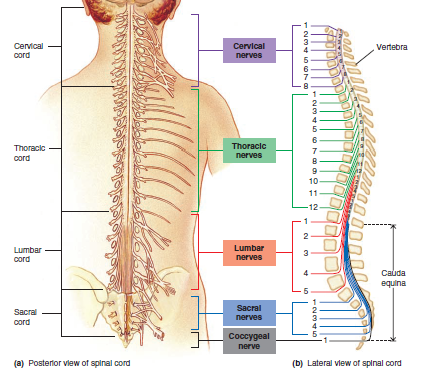
Motor Functions of the Spinal Cord; the Cord Reflexes
Sensory information is integrated at all levels of the nervous system and causes appropriate motor responses that begin in the spinal cord with relatively simple muscle reflexes, extend into the brain stem with more complicated responses, and finally extend to the cerebrum, where the most complicated muscle skills are controlled. Here, we discuss spinal cord control of muscle function. Without the special neuronal circuits of the cord, even the most complex motor control systems in the brain could not cause any purposeful muscle movement. For example, there is no neuronal circuit anywhere in the brain that causes the specific to-and-fro movements of the legs that are required in walking. Instead, the circuits for these movements are in the cord, and the brain simply sends command signals to the spinal cord to set into motion the walking process. Let us not belittle the role of the brain. The brain gives directions that control the sequential cord activities— for example, to promote turning movements when they are required, to lean the body forward during acceleration, to change the movements from walking to jumping as needed, and to monitor continuously and control equilibrium. All this is done through “analytical” and “command” signals generated in the brain. However, the many neuronal circuits of the spinal cord that are the objects of the commands are also required. These circuits provide all but a small fraction of the direct control of the muscles.
At the end of the lesson, students wil be able to learn;
- Organization within the spinal cord
- Describe the ascending and descending tracts in the spinal cord
- Define reflex action. Classify and describe reflexes
- Describe the muscle spindle and Golgi tendon organ. Explain their functions
- Pathophysiology of spinal shock


